Q: What carnivorous plants are covered by CITES?
A: CITES periodically reviews the status of the plants and animals in
its Appendices, so if you are planning on any importations you should find
out the most recent information on importations.
The information I have below is accurate as of July 2018, but in time may become dated. If you are interested in more
timely information, you should look around the internet. If you plan to ship plants covered by them, it is your responsibility
to find out what is legal and what is not.
Important web links that you should know about, or that I mention below are as follows
CITES main site
Convention Text (i.e. the rules)
Appendices I, II, III
Carnivorous plants covered by CITES
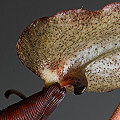
Nepenthes maxima

Sarracenia alabamensis
subsp. alabamensis
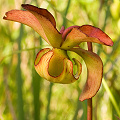
Sarracenia jonesii
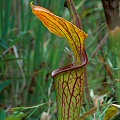
Sarracenia oreophila
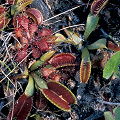
Dionaea muscipula
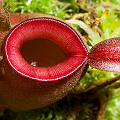
Nepenthes ampullaria
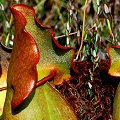
Sarracenia purpurea
There are three important Appendices for CITES, Appendix I, Appendix II, Appendix III.
Plants in Appendix I are deemed the most threatened by trade.
If you are engaged in international trade of any of these plants you
should be concerned with CITES rulings, as you are required to obtain permits.
Unfortunately for you, I have never shipped CITES plants internationally, so I do not know
about the mechanics of actually obtaining permits. You should start by contacting the CITES
Management Authorities for the countries involved to obtain your CITES documentation.
If you are shipping plants into one of the European Union member States you will need an import permit for both
Appendix I and Appendix II species. Many non-European Union countries don't require import permits for Appendix II species. I don't know about the situation with a
post-Brexit UK.
The only carnivorous plants that are protected in Appendix I are:
Sarracenia:
S. alabamensis subsp. alabamensis (=S. rubra subsp. alabamensis
S. oreophila
Nepenthes:
N. khasiana
The carnivorous plants on Appendix II are:
All Nepenthes not in Appendix I
All Sarracenia not in Appendix I
The exact compositions of these lists are a little strange. For example, why Nepenthes khasiana
listed on Appendix I, I just don't know. I think this is a historical artifact from the origins of CITES. Meanwhile, there are
plenty of Nepenthes that I think should be listed on Appendix I instead. Whiney carnivorous plant growers that would like to
be productive should work with the IUCN to get these lists updated. If whiney carnivorous plant growers just want to whine,
they shouldn't do anything to help. Just whine.
If you look at the Appendices themselves, you'll notice that all the carnivorous plants listed in Appendix II include the annotation
"#4" after their names. The meaning of this is explained at the bottom of the Appendices:
In accordance with Article I, paragraph (b), sub-paragraph (iii), of the Convention, the symbol (#) followed by a number
placed against the name of a species or higher taxon included in Appendix II or III designates parts or
derivatives which are specified in relation thereto for the purposes of the Convention as follows:
#1 Designates all parts and derivatives, except:
- seeds, spores and pollen (including pollinia);
- seedling or tissue cultures obtained in vitro, in solid or liquid media, transported in sterile containers; and
- cut flowers of artificially propagated plants;
So it is not necessary to obtain CITES paperwork for those kinds of plant parts/derivatives for Appendix II species.
Note that in order to be considered "seedling or tissue cultures obtained in vitro", the
plants must still be in flasks or some other sort of in vitro container! Deflasked, or potted, or bare-root plants
that you swear to the heavens were originally derived from in vitro propagation, do not count---you
will require permits for these.
Incidentally, it is important to observe that the preceding exemptions are only for materials originally
collected legally. If you collect seeds illegally, you
are violating the definition of "artificially propagated" as adopted at the 11th
Conference of the Parties, i.e.
b) i) established in accordance with the provisions of CITES and relevant national laws and in a manner
not detrimental to the survival of the species in the wild; and
That applies even to in vitro plants, if they resulted from seeds originally collected illegally!
In earlier versions of the CITES Appendices, additional carnivorous plants were
included that have since been delisted. Specifically,
Darlingtonia californica, Cephalotus follicularis, and
Byblis.
Page citations: CITES, 1992; von Arx, B. et al. 2001.